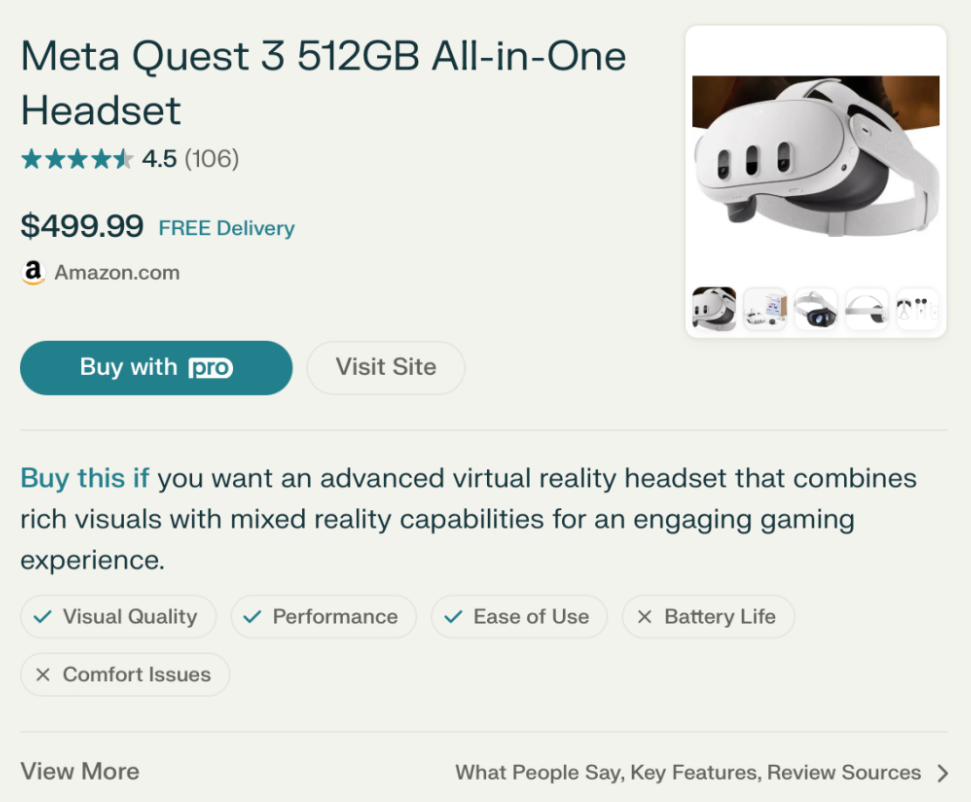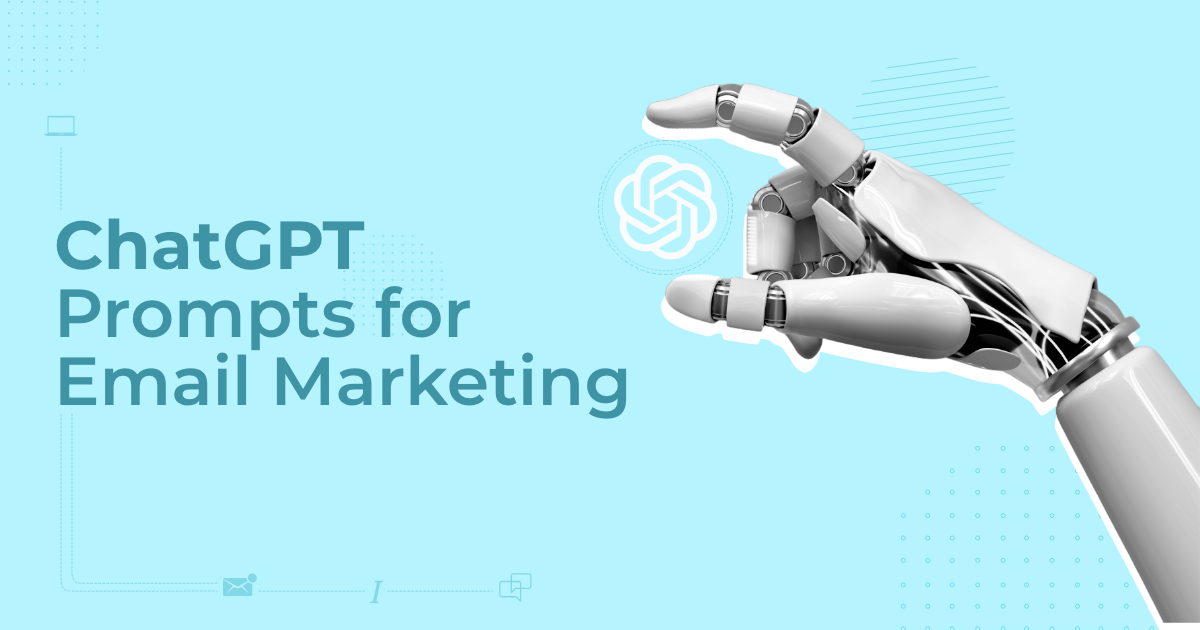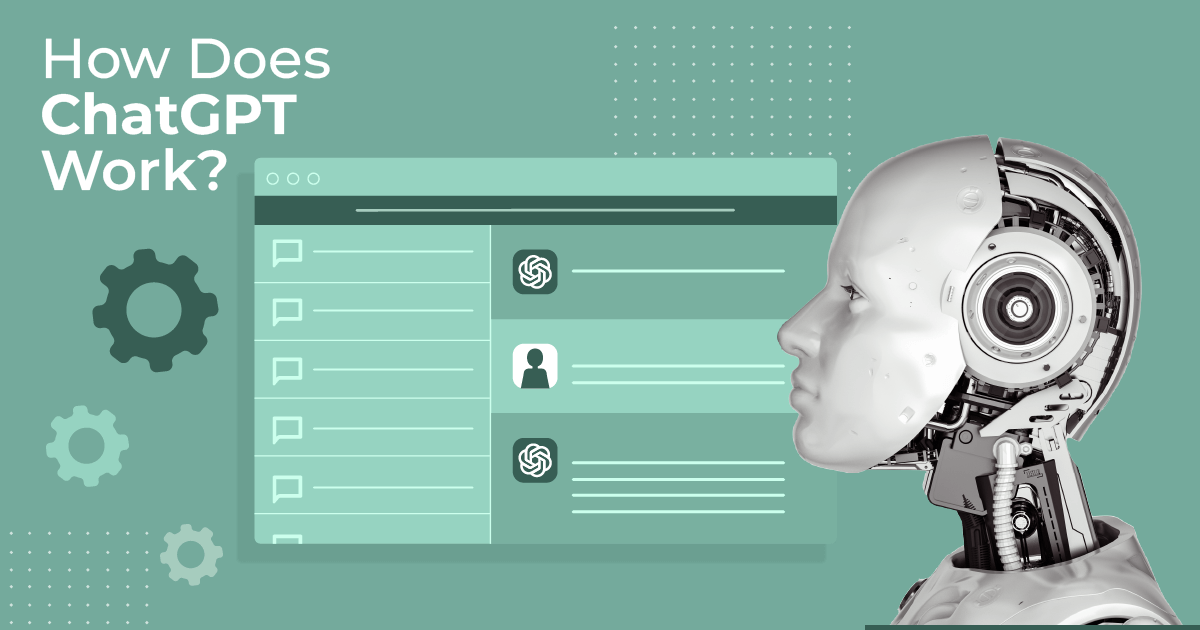
ChatGPT for Shopify: Benefits, Risks, and the Future of Ecommerce [2025]
The talk of the town isn’t just that ChatGPT is getting into eCommerce. It is already happening. Earlier this year, Testing Catalog identified unreleased code that hinted at a native shopping experience within ChatGPT.
As of September 29, 2025, OpenAI has confirmed it with the launch of Instant Checkout.
The feature is now live for U.S. Etsy sellers and will soon be expanded to more than a million Shopify merchants. This marks the first step in a new era of conversational commerce, where ChatGPT not only helps you find products but also enables you to purchase them directly within the chat.
In this post, we’ll break down what ChatGPT’s new shopping experience means, how it is reshaping the customer journey, and what businesses can do now to prepare.
What is Agentic Commerce?
Agentic commerce takes conversational commerce a step further. Now, you don’t just chat with a bot to get product suggestions; you let AI act on your behalf to complete the purchase.
With the new Agentic Commerce Protocol, ChatGPT can securely pass your order details to the merchant, process the payment, and confirm the purchase without leaving the chat. The AI acts like a digital shopping assistant, handling the steps you would normally do yourself.
For shoppers, this means a seamless journey from discovery to checkout. For businesses, it means a new way to sell online while still keeping full control over payments, fulfillment, and customer relationships.
Key Features of the ChatGPT Integration for Shopify
With Instant Checkout, the experience goes beyond recommendations. Users can view product details, tap ‘Buy,’ and complete their order without leaving the chat.
The rollout has begun with Etsy sellers in the U.S., and Shopify merchants will follow. More than a million stores, including notable brands such as Glossier, SKIMS, Spanx, and Vuori, will soon get access to the feature.
These key features include:
- A native Buy button within ChatGPT
- Display of price, shipping, and product information inside the chat panel
- Direct connection to Shopify’s checkout system, not an external redirect
- Secure payments powered by Stripe through the Agentic Commerce Protocol
How Other AI Tools Power Up Ecommerce
As the ChatGPT for Shopify integration is rolling out, other AI tools have already ventured into eCommerce.
Microsoft launched its Copilot Merchant Program in April 2025, providing eligible sellers with a built-in storefront directly within Copilot. It’s an early move to turn AI assistants into transaction-ready platforms.

Perplexity rolled out its “Buy with Pro” feature in late 2024. It allows users to purchase items directly from answers with a single click, paired with its merchant API.

OpenAI itself has also been running experiments through its Operator agent, which can already handle bookings, place grocery orders, and assist with travel, all on behalf of users.
Everything points to a future where AI assistants are taking action. It’s the kind of moment you’d expect from a Black Mirror storyline: you ask an AI to buy milk, and by the time you check your doorstep, it’s already there. Only now it’s not dystopian but efficient.
How ChatGPT for Shopify Will Change the eCommerce
When this integration rolls out fully, ChatGPT won’t just discuss products, but also help you buy them.
Conversational product discovery
Currently, if you ask ChatGPT a question like “What are the best eco-friendly running shoes under $100?” you’ll get brand suggestions, approximate prices, and explanations for why each option is sustainable.

ChatGPT can effectively highlight, summarize, and even explain the pros and cons, but it doesn’t facilitate a live purchase. You still have to leave the chat, search for the product, and finish the transaction on your own.
That’s precisely what the Shopify integration aims to change by introducing a direct shopping flow, allowing you to browse, compare, and check out products instantly without leaving the conversation.
Check out with fewer clicks
Imagine asking, “Can I buy the Adidas Lite Racer Adapt 5.0?” and seeing a “Buy Now” button right next to the product details, instantly connecting you to Shopify’s secure checkout.
Now, what if you could take it a step further and ask ChatGPT to:
- Find me this shoe for under $80.
- Show me a discount code if available.
- Which trusted Shopify merchants have the fastest shipping?
Instead of clicking through 10 product pages, ChatGPT will be able to filter, compare, and recommend the best match in seconds, integrating discovery, decision-making, and purchase into a single conversation.
More relevant product recommendations
Because ChatGPT understands your context and preferences, it can suggest gift ideas in a way that feels seamless and personal. If you ask for a present for a coffee lover, for example, it won’t just list random products.
Instead, it might explain why specific options are popular, compare them, and even ask follow-up questions to help you make an informed decision. This is something ChatGPT already does:

With the new Shopify integration, this experience will go even further, offering real products that you can purchase with one click, combining speed, convenience, and personalization in a seamless and helpful conversation.
Benefits for Shopify Merchants
Shopify merchants will now have a new channel available. But that’s not the only benefit they can look forward to.
Exposure in a high-traffic environment
Shopify merchants could gain access to 122 million daily ChatGPT users through a single conversational channel.
Instead of hoping shoppers land on their website organically or investing in paid ads, merchants can have their products appear directly inside ChatGPT conversations, where people are already spending their time.
Access to sales-qualified shoppers
When someone asks ChatGPT for a product recommendation, they’re already in a buying mindset. These moments are gold for merchants, since the shopper is actively looking to solve a problem or fulfill a need.
With ChatGPT’s ability to surface relevant results instantly, merchants can reach sales-qualified shoppers right at the moment they’re ready to take action.
This will likely surpass what Perplexity’s “Buy with Pro” offers by having ChatGPT evolve into a true sales assistant, who can understand the user’s needs, ask clarifying questions, compare options, address objections, and guide them to checkout.
Seamless integration
Another advantage is that merchants may not have to learn an entirely new system.
If the ChatGPT integration relies on Shopify’s existing product data and checkout infrastructure, it means no separate tools to manage, no duplicate inventory setup, and no complicated onboarding.
Merchants can continue to run their stores as usual while reaching shoppers on a new, AI-powered channel.
Small business exposure
Product placement in ChatGPT remains organic and unsponsored. Instant Checkout items aren’t given preference in results.
Instead, products are ranked on relevance, availability, price, quality, and whether the seller is the primary merchant. This ensures that smaller businesses can still compete fairly without needing large advertising budgets.
Limitations and Concerns
While the idea of selling through ChatGPT is exciting, it’s not without friction, especially for merchants accustomed to having complete control over their storefront’s appearance and functions.
Limited control over product display
In a traditional Shopify store, merchants have complete control over everything, from design and layout to how collections are presented.
In ChatGPT, that control is no longer present. You don’t get to choose how your product is introduced, how it’s compared, or even what competitors show up alongside it. It’s the AI’s decision, based on user prompts and ranking logic you can’t access.
Difficulty in attribution
One of the biggest questions is how attribution will work in this new setup. In most sales channels, such as Meta Ads, Google Shopping, or TikTok Shop, merchants receive transparent reporting on where conversions originate and how customers interact with their listings.
With ChatGPT for Shopify, it remains unclear whether merchants will be able to see details on which sales were influenced by ChatGPT recommendations or which specific prompts triggered product views in the chat.
Without that transparency, it could be more challenging to measure performance, optimize product data, or even justify investing time in adapting to AI-powered commerce.
No creative control over messaging
For marketers, one key challenge is that ChatGPT will likely summarize and rephrase product details in its own conversational style, rather than using your copy and brand voice.
This means marketers might lose control over how promotional language, emotional appeals, or storytelling elements are presented. If the AI’s summary feels too generic or lacks your brand personality, it could undermine your marketing efforts and make it harder to stand out.
Bugs and glitches
Since this feature is still new, there’s a good chance of glitches, mismatched recommendations, or products being shown in the wrong context. That could lead to confusion or even damage trust with shoppers.
Additionally, ChatGPT has faced growing pains with updates in the past, including higher error rates, temporary downtime, and slower response times when new features are rolled out. Until the system matures, merchants should closely monitor how their products are presented and be prepared to quickly flag any errors.
Usage fee
OpenAI has confirmed that merchants will only pay a small fee on completed purchases made through Instant Checkout. There are no upfront charges to participate, and the service is provided free of charge to users.
How to Prepare for the ChatGPT for Shopify Integration
If ChatGPT becomes a new sales channel, your store’s product content becomes your sales rep. And unlike your website, you won’t be there to explain things or guide the shopper. The AI will do it for you based on what it can understand from your data.
1. Optimize product titles and descriptions
AI thrives on clarity, so use straightforward, searchable product titles that describe precisely what you’re selling.
For example, go for “Organic Cotton Crewneck T-Shirt for Men” instead of “The Sunday Tee.”
As you can see in this ChatGPT search example, clear keywords allow the assistant to quickly match the user’s request and present it in a way that’s easy to scan, compare, and click through.

Your product descriptions should:
- Clearly outline features and benefits
- Use natural language and relevant keywords
- Anticipate questions users might ask in chat (e.g., sizing, materials, use cases)
The goal of this optimization is to make it easy for ChatGPT to show your product when a user types something like “best everyday cotton t-shirt for men.”
2. Use high-quality images and accurate metadata
While ChatGPT itself doesn’t “see” your product photos the way a human does, it can reference product details that are tagged correctly, including colors, dimensions, and product categories.
Make sure your product listings include:
- Alt text on all images
- Structured metadata (tags, types, attributes)
- Up-to-date availability and shipping info
The more precise your data, the better ChatGPT can match your products to a shopper’s request. Plus, keeping this data clean and up to date will also increase your Google search visibility, so these efforts won’t go to waste across other channels.
3. Monitor Shopify’s AI and API updates
As this integration evolves, Shopify may roll out updates or new tools to help merchants get better visibility in ChatGPT results.
It’s worth keeping an eye on developer documentation for any changes to product feeds or APIs, as well as updates tied to AI-readiness or conversational commerce.
Shopify could also recommend new tagging structures or product schemas to support this shift. Staying ahead of these updates could help your products appear before competitors do.
4. See how your store and products show up in ChatGPT
While you can’t see exactly how ChatGPT’s ranking algorithm works, you can still run simple tests to get a feel for how your products might appear.
Try searching for your store name or specific products directly in ChatGPT, then ask follow-up questions similar to what real customers would say. You can also compare how your listings stack up against competitors or review results in other tools, such as Copilot or Perplexity, which already display Shopify products.
Some SEO tools have also begun to surface LLM visibility data. Ahrefs, for example, just rolled out Brand Radar, which tracks brand mentions in ChatGPT, Perplexity, and soon Gemini. You can now see the questions people are asking about your brand, where you appear, and how interest in your brand changes over time through keyword search volume.
This kind of insight can help you identify content gaps, refine product descriptions, and enhance your visibility before the integration is rolled out.
5. Rethink your FAQ page
ChatGPT will likely draw on your store’s frequently asked questions to answer shoppers quickly and accurately. That means your FAQ page can play a big role in how the assistant explains your products and policies.
Make sure your FAQ has clear answers for:
- Returns
- Shipping
- Materials
- Sizing
- Gift options
The more structured and straightforward this information is, the easier it will be for ChatGPT to share accurate details with customers.
Additional Resources
- How To Use ChatGPT [Web & API]
- 26 Innovative ChatGPT Prompts For Email Marketing
- How to Use AI-Generated Text Effectively [with Prompts]
- AI Email Marketing: How To, Use Cases & Tools
The Future of ChatGPT for Shopify
The integration of Shopify with ChatGPT is happening through Instant Checkout. This marks the beginning of a new way to shop online, combining speed, personalization, and convenience inside a tool already used by hundreds of millions of people every week.
For merchants and marketers, this shift creates new opportunities to reach high-intent shoppers and turn conversations into sales, while still keeping control over payments, fulfillment, and customer relationships. At the same time, it introduces new questions about data sharing, evolving features, and long-term costs that businesses should continue to monitor.
The best course of action for now is to stay informed, optimize your product data, and prepare your storefront for AI-powered commerce. The earlier you adapt, the better positioned you’ll be as this new channel grows.
FAQs
Let’s answer some common questions about ChatGPT and Shopify.
1. Can I control how my Shopify store appears in ChatGPT?
Not directly, but you can influence how your store shows up by optimizing your product data. Clear titles, detailed descriptions, and up-to-date content improve your chances of being surfaced accurately in AI tools.
2. Do I need to install anything for my products to show up in ChatGPT right now?
No installation is required. ChatGPT uses publicly available information from the web and Shopify’s integrations. If your store is well-indexed and follows best practices, your products may already appear.
3. How does ChatGPT choose which Shopify products to recommend?
ChatGPT ranks products based on relevance to the user’s query, not paid placement. When multiple merchants sell the same item, factors such as availability, price, quality, whether the seller is the primary merchant, and whether Instant Checkout is enabled are taken into account. Listings with clear, complete product data are also more likely to be displayed, as they enable the AI to match user intent accurately.
4. What can I do to improve my store’s visibility in AI tools like ChatGPT and Perplexity?
Start by reviewing how your products show up today. Use tools like Ahrefs’ Brand Radar to track mentions and visibility. Then, refine your product pages, focus on useful metadata, and monitor what real users are asking about your brand.




 Published by
Published by
